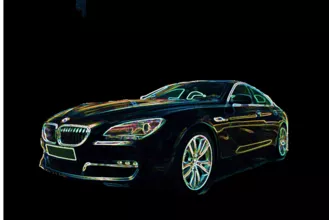AI in digital car design for pedestrian safety.
- Sponsored by: BMW
- Project Leader: Dr. Ricardo Acevedo Cabra
- Scientific Lead: PhD. Candidate Laure Vuaille.
- Term: Winter semester 2019
Results of this project are explained in detail in the final documentation and presentation.

New BMW car models are being developed several years before arriving on the market. The main part of the development process is now digital. Especially many numerical simulations are computed in order to simulate the behavior of the car in various situations. For instance, Finite-Element-Method based simulations are run for checking the behavior of the car in case of accidents with pedestrians. Following the outcome of the simulations, the current design may be modified to converge towards the high quality performance criteria of the brand.
Due to the complexity of car-models (hundreds of components assembled together in meaningful ways) as well as that of the physical phenomena involved in such simulations, many steps in this digitalized process are relying significantly on human expertise and manual operations. Moreover, this process is by nature iterative: many versions with small changes are run sequentially, converging slowly towards the targets.
With the rise of artificial intelligence and the accumulation of digital car data over the last decade, BMW is now developing new techniques based on artificial intelligence to enhance, accelerate and strengthen this digital development process. In this TUM-DI-Lab project, we propose to participate in this initiative by developing artificial-intelligence based automation techniques for automatic recognition of car components (3D object recognition), component-based comparison of car models (feature engineering, pattern recognition) and correlation with simulation outcomes (correlation, classification). Otherwise formulated, the aim is to implement an intelligent system that is able to identify relevant components in car models and characterize them in a concise and quantitative fashion such as to measure the similarities and differences of these car components between car models and using these results for predicting the change of simulation outcome.